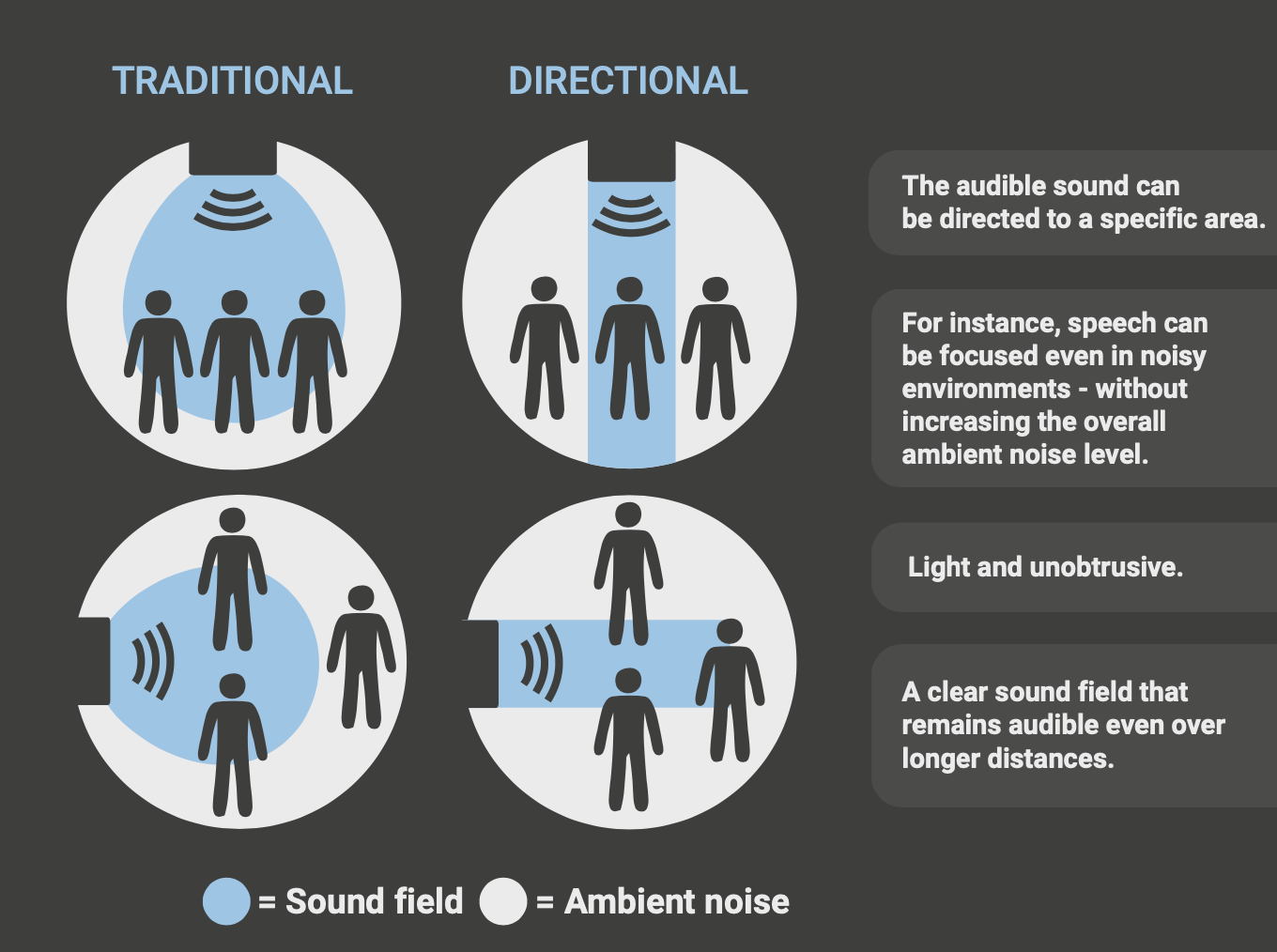What is directional sound and directional speakers?

In the world of audio technology, directional sound plays a pivotal role in creating immersive and engaging experiences. Traditional speakers radiate sound in all directions, making it challenging to localize the source accurately. However, advancements in audio engineering have led to the development of innovative solutions, such as electrostatic directional speakers. Among them, Panphonics directional speakers have emerged as a fascinating example of directional sound in electrostatic technology.
Panphonics directional speakers employ an innovative approach to sound reproduction by utilizing electrostatic principles. Unlike conventional dynamic drivers that rely on moving cones, these speakers harness the power of static electric charges to create sound. The speakers consist of a thin, flexible diaphragm suspended between two electrically charged plates. As audio signals are fed through the plates, they create an electric field that interacts with the diaphragm, causing it to vibrate and produce sound waves.
What sets Panphonics directional speakers apart is the ability to generate highly focused sound beams. By manipulating the electric field, these speakers can create a precise and controlled audio projection. The directional sound produced by Panphonics speakers can be steered towards specific areas or listeners, allowing for a targeted audio experience in a wide range of applications.

One of the key advantages of Panphonics electrostatic directional speakers is the ability to provide sound localization, making them ideal for environments where precise audio targeting is crucial. For instance, in museums, galleries, or exhibitions, these speakers can direct audio commentary to specific exhibits or artworks, enhancing the visitor experience. Similarly, in retail environments, directional sound can be employed to deliver targeted advertisements or announcements to specific sections or product displays to boost sales and redirect customer attention.
Moreover, directional sound technology has also found applications in public spaces, airports, and transportation systems. By employing Panphonics directional speakers, announcements and instructions can be directed to specific areas or platforms, minimizing confusion and improving communication efficiency.
In summary, Panphonics electrostatic speakers represent an exciting example of directional sound technology. The unique design and utilization of electrostatic principles enable them to produce highly focused sound beams, allowing for precise audio targeting and localization. Whether it’s enhancing museum exhibits, delivering targeted advertisements, or improving communication in public spaces, these directional speakers open up a world of possibilities for immersive and engaging audio experiences.